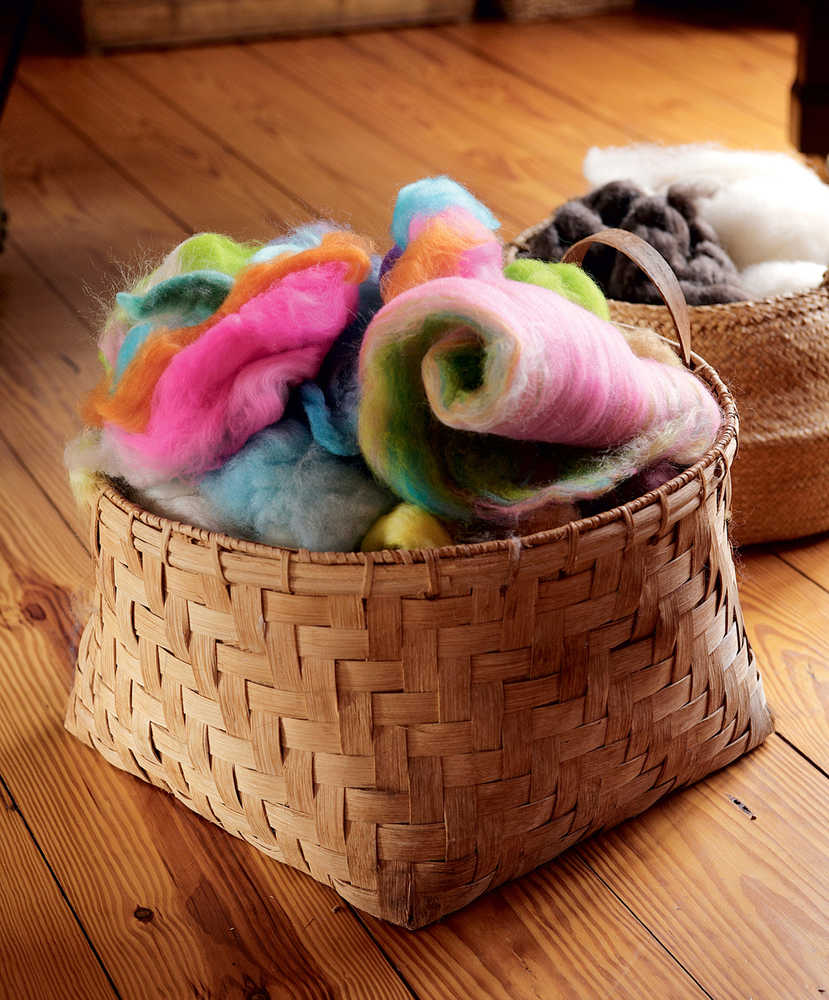Associated Press
Like knitting and crocheting, spinning — the process of twisting fibers together to make yarn — is enjoying a comeback.
Textile artists want “to control the front end of their yarn,” says Sarah Anderson of Snohomish, Washington, author of “The Spinner’s Book of Yarn Designs” (Storey Publishing, 2012). “Instead of going to the yarn shop and saying, ‘What do you have?’ I can choose. I can say, I want this wool and silk together and I can blend them to make just the yarn I want.”
“Fifteen years ago there was a renaissance in knitting. Now a lot of those knitters are starting to spin.”
By spinning yarn yourself, you can control its weight, texture and color. And today’s fibers don’t just come off the backs of shorn sheep; some are made from plant stock, such as wood pulp, and from synthetic fibers, such as nylon.
“A lot of spinners really like to try every fiber that’s out there,” says Rachel Romine, a longtime spinner and knitter who works at her family’s shop, Paradise Fibers, in Spokane, Washington. “We have a rose fiber that’s made from rose flowers — from the stock, I believe. That was a big hit.”
She’s seen artists spin feathers, shredded newspaper or pet hair into yarn.
Ancient civilizations spun yarn from natural fibers — wool, cotton, silk and linen — with a winding stick, and later with a hand spindle. With the invention of the spinning wheel in the 11th century in Asia and its arrival in Europe about 200 years later, spinning experienced its first renaissance, and the Western textile industry was born.
Besides knitting and crochet, spun yarn can be used in weaving, rug hooking, needlepoint, crewel embroidery and tatting, among other textile crafts, says Anderson.
To get started, she recommends finding a class at a yarn store or through a local spinning guild. A spinning wheel is not essential. Many spinners use only an inexpensive spindle for wrapping fibers. Other supplies might include a lazy kate, which holds bobbins of yarn, and a skein winder (the portable version is called a niddy noddy), for winding finished yarn into a skein.
“It’s nice to sit with somebody who can coach you at the start,” says the self-taught Anderson, who has 40 years in the craft and recommends doing a little spinning every day.
“It’s a muscle memory,” she says. “If you sleep on a skill, especially something having to do with your hands and coordination, it’s as if your brain has been working on it overnight.”
Anderson’s book helps spinners understand how the twisting process works. Yarn twists in two directions: Turn the wheel or spindle to the right, or clockwise, for a Z-like twist in the yarn; turn it to the left, or counterclockwise, for an S twist.
Single strands of fiber are spun in one direction and then combined in the opposite direction to lock them together.
Fiber may be purchased at knitting stores or online.
“Many of us also buy from farmers who raise sheep, goats or alpaca,” says Anderson. “Once people know you spin, wool seems to find you.”
Raw fiber — right off the sheep or alpaca — needs to be carded and washed before use.
Spinning can become addictive, says Romine.
“I warn my knitter friends, if they want me to teach them to spin, it’s going to cut into their knitting time,” she says.
The attraction is partly just the act of spinning, which becomes meditative once it’s rote, and there’s also the allure of creating something from a pile of fiber.
“You can turn (fiber) all the way into yarn and then into a sweater,” Romine says. “You really feel you’ve accomplished something major and significant.”
Handspun yarn has a different feel and texture than manufactured skeins, she insists, and there’s a sentimental attraction.
“We deal with really nice manufactured spun yarns here,” Romine says about her store. But “there’s still something about that person spending those hours spinning that yarn . it’s almost like a photo. It’s a record of their time they spent creating this.”

